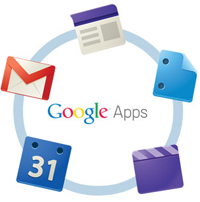 The Technology team is moving rapidly to prepare for the Google Apps migration for faculty and staff. As we get ready to kick things off in January, we wanted to let you know when you’ll be migrated and what you can do to prepare.
The Technology team is moving rapidly to prepare for the Google Apps migration for faculty and staff. As we get ready to kick things off in January, we wanted to let you know when you’ll be migrated and what you can do to prepare.
We have recently posted the full migration schedule on ourproject website. The timeline is broken down into departments and schools. As your migration date approaches, Technology will work with a department or school liaison to coordinate individual migrations based on your availability.
Prior to your migration date, you will receive additional information about what to expect. If you want to get a jumpstart on migration, you can take a few steps to prepare. These include cleaning up old email folders. If you have email from several years stored on your computer, this is a great opportunity to get rid of old emails and files you no longer need. If you have questions about how to do this, please contact us. If you want to know more about the Simmons College email retention policy, please visit theSimmons College Policy Index or contact the College Archivist, Jason Wood.
If you’d like to learn more about Google Apps and how to use it, we recommend checking out the Quick Start Guides on the project site or attending an introductory training. We’re scheduling these sessions now and they’ll be available starting in January. Each session will provide an overview of Google Apps for Education and we’ll be available to answer questions you might have.
A question we’ve been hearing a lot recently is, “What’s happening to Meeting Maker?” To make this transition as smooth as possible, we’re going to keep Meeting Maker running for the time being. Once everyone has been moved to Google Apps (late April), we will set a timeline for shutting it off. One reason for keeping Meeting Maker active is that not all faculty and staff are moving to Google Apps simultaneously. If your department is moving early, you might still need Meeting Maker for appointments set by colleagues in other departments. Additionally, there is no foolproof way to move all meetings from Meeting Maker to Google Apps without potentially losing data. You will need to manually create any recurring appointments in Google Calendar. We estimate that this will take no more than an hour, even for those of you with complex recurring meetings. The Service Desk and migration team are also here to help you with the transition.
We hope you will take time to look at the project site and to familiarize yourself with Google Apps for Education. We’ll make announcements about training and additional resources after the winter break.
